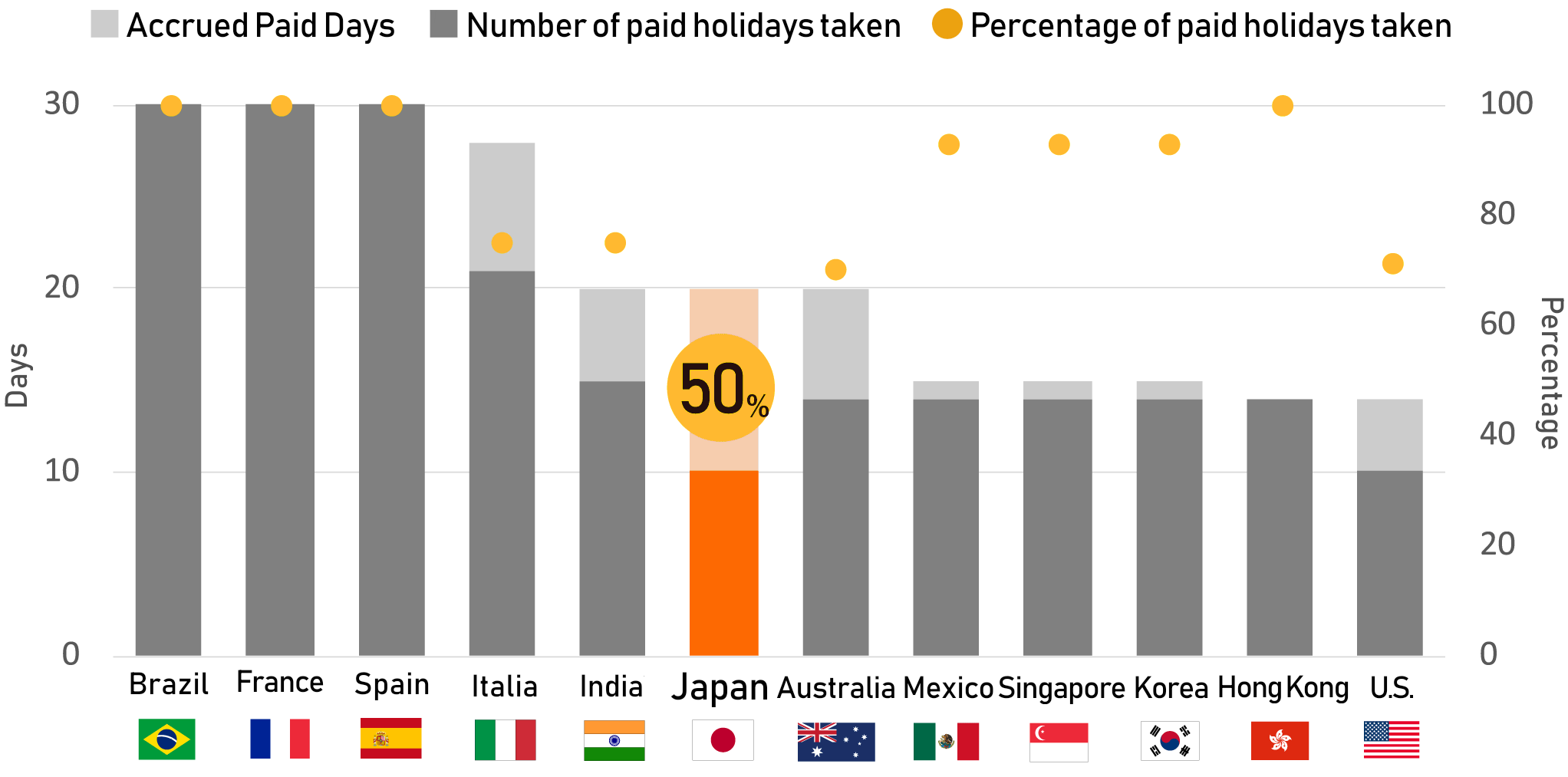Annual Holiday
Annual vacation in Japanese companies
In recent years, the low rate of employees taking annual vacation (so-called "paid leave") has become a social problem.
According to the 2019 Comprehensive Survey of Working Conditions, the average annual vacation granted was 18.0 days and the average number of days taken was 9.4 days, with the percentage of employees taking the leave being 52.4%. It was 56.1% in 1992 and 1993, but it has been declining since then.
According to the "Awareness survey on realization of work-life balance and promotion of special leave system" conducted in 2016, 21.9% of respondents said they felt hesitant about taking annual holidays, while 41.9% said they felt a little hesitant, indicating that about 2/3 of respondents said they would hesitate.
Some of the reasons for this are that it's a nuisance to others, you'll be busy later, and it's hard to get a holiday leave because of the atmosphere at workplace.
On the other hand, in European countries, employees are given an average of 20 to 30 days off, and the employer is responsible to have employees to take almost all of them.

There are differences in systems, but in Japan, compared to other countries, there are not many annual holidays given and the rate of taking the vacation is very low.
The ILO (International Labour Organization) Convention (Japan has not ratified it.) recommends that employees take at least three weeks of annual vacation, and two weeks in a row are recommended.
The rate of annual vacation taken in Japanese companies is overwhelmingly low compared to other countries.
In other countries, it is the responsibility of employers to have workers take full annual vacation.